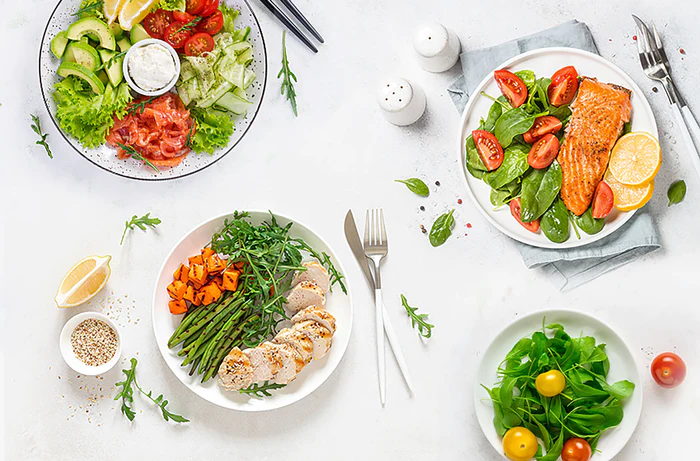When summer approaches, one of the first things you do is hunt down your left-over sunscreen bottles. You might think that since you didn’t use it all up last year, it is still safe to use this season. Think again.
Sunscreens are made of reactive chemicals that don’t last forever. Chemical ingredients like oxybenzone, avobenzone and octylmethocinnamate are the primary ingredients in sunscreens. Besides being reactive chemicals that expire, they are also endocrine disruptors if they get into the blood. In fact, oxybenzone is found in the blood of 96% of Americans. It’s amazing to me that people who are so concerned by herbicides and pesticides are quite willing to slather endocrine disruptors on their skin every summer. Endocrine disruptors work against the body’s systems such as the thyroid and adrenals, leading to a host of negative symptoms and health problems.
Myth: You Must Always Wear Sunscreen
Aren’t we told that without these sunscreens we will all die from skin cancer? Unfortunately for the sunscreen companies, data doesn’t support this great advertising line. Two recent studies from Sweden indicate that those who had the lowest sun exposure had higher mortality rates than those with higher levels of sun exposure. Even with the looming danger of melanoma, the deadliest form of skin cancer, your best protection is not sunscreens, but old-fashioned sun protection methods like hats, long-sleeved shirts, and staying in the shade.
Science busts the sunscreen myth. First, sunscreens block the formation of Vitamin D and there is an association of low levels of Vitamin D to mortality. Second, sunlight enhances mood through the release of endorphins, treating skin diseases such as helping to heal psoriasis, treating seasonal affective disorder (SAD), and orchestrating melatonin levels for better sleep.
Sunscreens can cause dangerous radiation from the sun to be absorbed into the skin. This can cause damage to the stem cells in the dermis making it difficult to regenerate skin cells. Also, the chemicals in sunscreens are inflammatory and create photosensitivity in the skin. The higher the SPF number of a sunscreen, the more photosensitivity it creates. In fact, the SPF number is only relative to blocking UVB radiation, which is effectively stopped by the epidermis (the layer of dead skin cells that protect the living skin cells in the dermis). Finally, while we are using more sunscreens than ever and avoiding the sun, skin cancer rates, especially melanoma, keep growing each year.
Truth: You Can Protect the Skin Naturally
Natural defenses in the living dermis are always more effective than sunscreens in protecting the skin. The two primary dietary defenses are omega-3 fatty acids from fish oil, and polyphenols. The omega-3 fatty acids (especially in high concentrations in the blood) generate hormones known as resolvins that stop the inflammation caused by excessive sun exposure. The polyphenols activate gene transcription factors that cause the production of anti-oxidative enzymes that clean up any free radicals induced by excessive sun exposure. Of course, if you don’t have adequate levels of omega-3 fatty acids and polyphenols in the blood vessels circulating through the dermis, your skin literally becomes toast.
I am not advocating that you go out for a day in the sun without any protection. That could result in a severe sunburn and could lead to skin cancer in later years. Be smart about your sun exposure, and if you are spending an entire day outside, make sure you find some shade, bring an umbrella, have loose clothing that covers your arms and legs and a hat that will protect your head and face.
Make the Sun Your Health Ally Instead of Your Enemy
First, try to get 20 minutes of sun exposure every day. Ideally, swimming outdoors is great way to get the maximum amount of skin exposure to the sun. Sunbathing is another, but once your skin begins to turn a slight pink, it’s time to get out of the sun. If you can’t get out of the sun, then wear a long-sleeved shirt and large-brimmed hat to protect the skin for the rest of the day. Also make sure you never go to the pool or the beach without a large umbrella to sit under. Finally make sure you are consuming a lot of omega-3 fatty acids and polyphenols to provide the intrinsic sun protectors we are designed to use.
References:
- Yang L et al. “Utraviolet exposure and mortality among women in Sweden. Cancer Epidemiol Biomarkers Prev 20:683-690 (2011).
- Berwik M. “Can UV exposure decrease mortality?’ Cancer Epidemiolo Biomarkers Prev 20:582-584 (2011).
- Linquvist PG et al. “Avoidance of sun exposure is a risk factor for all-cause mortality.” J Intern Med 276:77-86 (2014).
- Lazovich D et al. “Melanoma risk in relation to use of sunscreen or other sun protection methods.” Cancer Epidemiolo Biomarkers Prev 20:2583-2593 (2011).
- Ford ES, Zhao G, Tsai J, and Li C. “Vitamin D and all-cause mortality among adults in USA.” Int J Epidemiol 40:998-1005 (2011).






Let Us Know What You Thought about this Post.
Put your Comment Below.